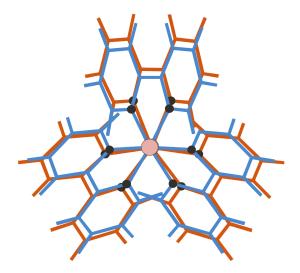|
Related Topics: |
|
|
|
Current News |
|
Chemistry A to Z |
|
About Internetchemistry |
Molecules in the spotlight |
|
A novel x-ray technique allowing the observation of molecular motion on a time scale never reached before has been developed by a team of researchers from EPFL and the Paul Scherrer Institute (PSI) in Switzerland. Results of the research led by Professor Majed Chergui, head of EPFL’s laboratory of Ultrafast Spectroscopy in collaboration with the FEMTO group at PSI appeared online December 11, 2008, in the journal Science [see below]. This discovery opens promising prospects for the study of chemical and biological systems. It allows a better understanding of the structural evolution of molecules during a chemical reaction. |
|
The researchers have applied it to the study of metal-based molecular complexes, of high interest in chemistry. This could lead to applications in magnetic data storage or solar energy. It also opens new perspectives in biology, because the molecules studied are analogous to the active center in hemoproteins (haemoglobin, myoglobin). Structural evolution It is possible to follow a cat landing on its feel in “real time” using a camera with shutter times on the order of tens of milliseconds. To do the same with molecules, 100 000 million times smaller than cats, requires shutter times that are 100 000 million times faster -- a few tens of femtoseconds (1 femtosecond is to a second what a second is to 32 million years). Although there are lasers that permit such shutter speeds, no existing optical methods can capture the molecular structure. In order to overcome this limitation, Chergui’s team combined lasers delivering femtosecond pulses of ultraviolet-visible light with a source of femtosecond X-ray pulses, in a technique now known as ultrafast X-Ray Absorption Spectroscopy. “With the extremely short wavelengths of this kind of pulsed radiation, it is possible to observe the molecular structure changes, and thus to obtain precise information about the breaking, the formation, or the transformation of chemical bonds between atoms. And all this, in real time,” explains Chergui. Collaboration with the Paul Scherrer Institute To reach this degree of precision, the researchers needed a source of stable and tunable femtosecond X-Ray pulses. They found it at the Paul Scherrer Institute in Villigen, Switzerland, in a collaboration with Dr. Rafael Abela’s team. Using the femtosecond X-ray pulses extracted from the Swiss Light Source synchrotron in a technique developed at the PSI, the researchers were able to follow in real time a structural change of the molecule in 150 femtoseconds. This method is an excellent tool for analysing reactions in liquid and disordered environments that characterize many biological and chemical systems. |
|
|
|

